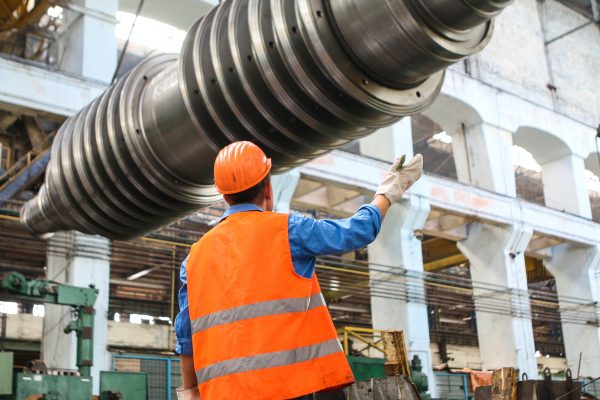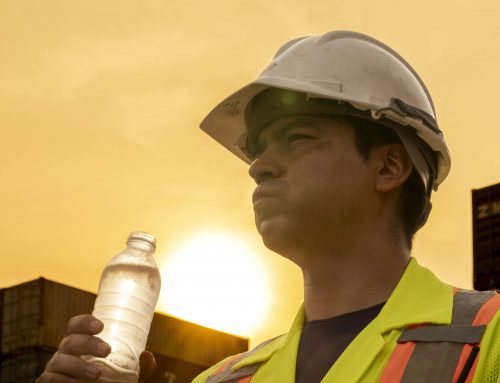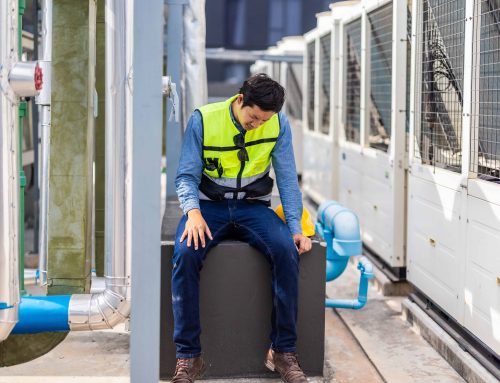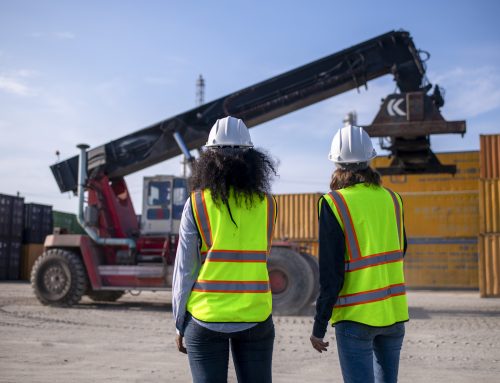Last Updated on
Many people work in the construction industry, which has a fatal injury rate that is higher than the national average. Work accidents and injuries on construction sites are common due to a number of potential hazards, including falls from heights, collapses of trenches and scaffolds, electric shock, arc flashes or blasts, repetitive motion, and failure to use the proper personal protective equipment and devices.
Scaffolding Hazards
Falls occur when scaffolding is not erected and used correctly. The Occupational Safety and Health Administration estimates that if correct protective methods were used, about 4,500 injuries and 50 fatalities could be prevented annually.
- Scaffolds must be strong enough to hold four times the maximum intended load without shifting or displacing, and they must be erected on solid footings.
- Only trained workers can erect, inspect, move, or dismantle scaffolds.
- Scaffolds must include toe boards, midrails, and guard rails, and these items must be maintained to ensure that they are strong.
- Suspension scaffolds must be inspected prior to every shift and after any situation that could impact the integrity of the scaffold.
- All ropes must be protected from heat-producing sources.
- Employees must be trained about all hazards involving diagonal braces.
- Scaffolds must be accessible by stairways and ladders and always placed at least 10 feet from power lines.
Fall Hazards
Falls represent the biggest fatal hazard to construction workers. Falls may occur due to unstable work surfaces, human error, and misuse of or failure to use protection equipment.
- Use aerial lifts and elevated platforms for elevated work surfaces.
- Use guard rail systems, toe boards, warning lines, control line systems, safety nets, fall arrest systems, and restraint systems for protection.
- Cover floor holes.
Ladders and Stairway Hazards
Ladders and stairways are involved in injuries and fatalities each year on construction sites. Stairways are associated with trips and falls.
- Choose the correct ladder for the job.
- Perform a visual inspection of the ladder prior to use to make sure it’s safe, and label defective ladders to prevent their use.
- Do not load ladders beyond the marked capacity, taking into account the weight of the user and any materials and tools.
- Do not use metal ladders near overhead power lines or for electrical work.
- Keep the stairs clear.
- Fix slippery conditions on stairways promptly.
- Install non-slip treads on the steps and landings of stairways.
- Install handrails on stairways with four or more risers and stairways that rise more than 30 inches in height.
Trenching Hazards
Injuries and fatalities often occur on construction sites due to trench collapses.
- Workers must never enter unprotected trenches. Trenches deeper than 20 feet require protective systems designed by professional engineers.
- Protective systems should include sloping at a specified angle, inclined away from the excavation with a height-to-depth ratio no steeper than 1.5:1, depending on the type of soil.
- Install supports to prevent soil movement for trenches less than 20 feet deep.
- Use trench boxes to prevent soil cave-ins.
- Install a ramp, stairway, or ladder with less than 25 feet of lateral travel to provide an exit from a trench.
- Conduct regular trench inspections after vibrations or rainstorms.
Crane Hazards
Cranes require regular inspections and correct use to prevent serious work accidents. Typical injuries involve workers being hit by an overhead load or trapped in the crane’s swing radius.
- Perform regular inspections of all equipment.
- Do not exceed load capacities.
- Raise the load slightly to check the balance and brakes prior to using the crane.
- Never wrap hoist ropes or chains around a load.
- Extend outriggers fully.
- Never move loads above workers.
- Barricade areas within a crane’s swing radius.
- Monitor overhead areas to keep the crane away from electrical lines.
Hazard Communication
Workers are often injured due to failure to communicate hazards involving chemicals, fires, explosions, and respiratory problems.
- Train employees to use an MSDS.
- Follow all MSDS instructions for chemicals.
- Install cleanup kits near chemical areas.
- Create written spill control plans, and train employees in cleanup procedures.
- Provide correct protective gear, and require employees to use it.
- Store chemicals safely.
Forklift Hazards
OSHA estimates that about 95,000 forklift operators are injured every year, and another 100 are fatally injured annually.
- All operators must be at least 18 years old, trained, and certified.
- Maintain equipment carefully, and remove defective forklifts from service.
- Any modifications to forklifts must be approved by the manufacturer.
- Safe operating procedures must always be used.
- Never exceed the load capacity, and avoid traveling with elevated loads.
- Keep rollover protective structures in place.
Head Protection Hazards
Blows to the head can result in serious head injuries. All workers must wear hard hats in construction areas.
Safety Precautions
Eye and Face Protection:
- Require the use of safety glasses or face shields for work operations that may result in foreign objects entering the eyes.
- Choose eye and face protection according to the hazards involved.
Foot Protection:
- Construction workers must wear slip-resistant shoes or boots that have puncture-resistant soles and safety toes.
Hand Protection:
- Gloves must fit snugly and must be suited to the job.
Electrical Safety:
- Always shut off power and attach grounds for new or existing energized electrical circuits before working on them.
- Replace damaged electrical cords and cables promptly.
- Use extension cords with grounding prongs, and never bypass protective systems when using electricity.
- Keep equipment, ladders, and scaffolds away from overhead power lines.
- Never use multiple plug adapters.
This article written by Jonathan Rosenfled from Rosenfeld Injury Lawyers.






